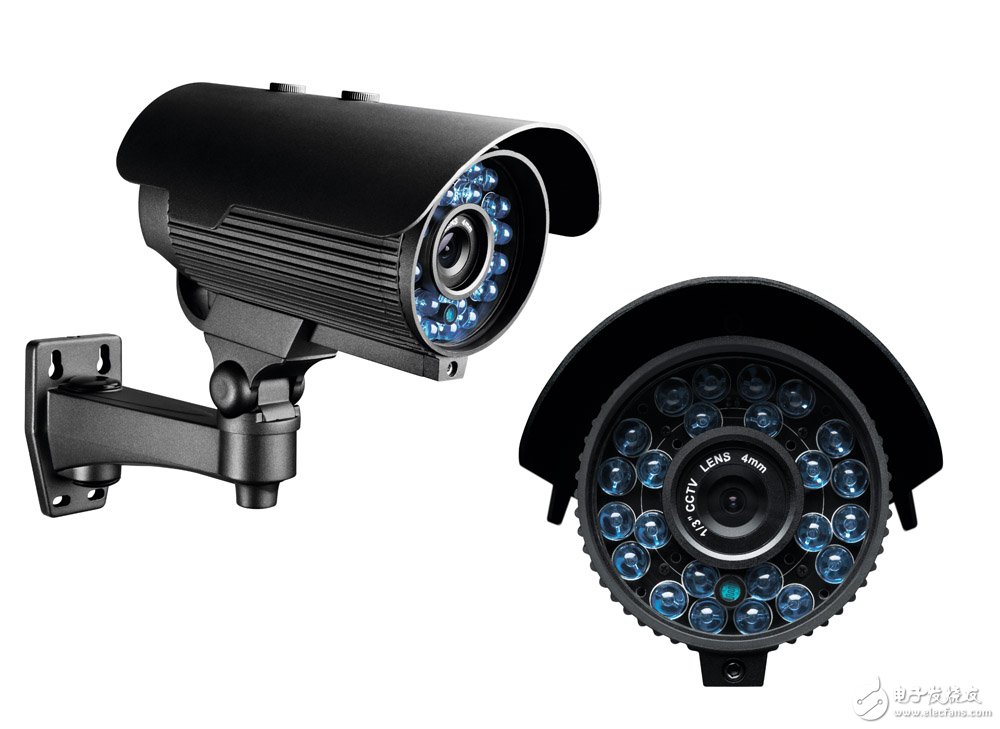Looking back at the development of the professional and consumer video surveillance industry in recent years, IHS used these two words "the most interesting" and "most confusing". In IHS's view, the sharp price cuts of semiconductor components have had a direct impact on the entire industry chain of video surveillance. With the pressure of more commoditized market, more suppliers are looking forward to rushing out of the market, some relying on differentiated products or services, and some rely on the assistance of channel partners. For players who still want to be in the video surveillance market in the future, whether it is equipment suppliers, distributors or system integrators, differentiation is the key to maintaining and expanding the market. In the forecast of the 2015 video surveillance market, they put forward some prospects for nine major trends such as embedded vision, analog HD, smart home and wearable cameras.

First, the panoramic camera + Middle East market + urban energy education monitoring constitutes the "star of potential"
Over the years, many people in the industry have always believed that the security industry is still the "sunshine industry", which is also an important reason for many practitioners and leaders to be tough support in the industry's reshuffle and change. IHS forecasts that the world video surveillance market will grow by more than 10% in 2015, while growth in certain products, regions and industries will always be significantly ahead of the overall market. Ion Principal Analyst Jon Cropley said that it is expected to boost the growth point of the market in 2015. The market demand for 180°/360° panoramic cameras is growing very fast. There is still no sign of any decrease in growth in 2015. Global shipments The number is expected to increase by more than 70%.
In terms of regional markets, the total market for video surveillance equipment in the Middle East in 2015 exceeded 500 million US dollars for the first time. Many of the world's largest video surveillance projects are from the Middle East, and a large number of large projects are still under construction, and the growth potential in the Middle East remains strong. In the field of terminal industry, IHS once predicted that the urban monitoring and energy industry was the fastest growing market in 2014. This year they expect the growth momentum of these two industries to remain, while the growth of the education industry will lead other industries. In 2015, the global video surveillance equipment market in education is expected to grow at a rate of 15%.
Second, the analog HD melee is at the time
In fact, there is not much doubt about the trend of analog HD in the market in 2015. After all, from the first three contests launched by Dahua, TECHPOINT and NEXTCHIP last year, many manufacturers have already felt their battle. The newspaper also made several in-depth reports in the past year. At the same time, coupled with the appearance of the down-regulated version of SDI in the past year, the IP surveillance of the limelight is even somewhat "cold".
According to current statistics, the total shipments of analog and digital HD cameras in 2014 were at least 4 million, which is an alarming increase for the past 12 months. David Green, senior analyst at IHS, said that the market situation will depend on the outcome of the two battlefields. The first battlefield is the contest of transmission technology: analog HD and digital HD. The second battlefield is the mainstream technologies CVI, AHD and TVI that simulate HD. The results of this contest are still difficult to predict, and manufacturers have no clear conclusions on this issue. According to the reporter, many well-known monitoring equipment manufacturers have chosen two options.
Third, the H.265 tide will be led by China
At the Beijing International Security Exhibition in October 2014, H.265 became one of the hottest topics. At the show, Haisi released the H.265 codec chip for video surveillance for the first time. At the same time, many Chinese manufacturers actively followed up and released products based on H.265 chips, while module manufacturers Tianshitong and Xiongmaidu. The H.265 camera module was quickly introduced.
Will H.265 change the market landscape with its leading technology? IHS China analyst HarryCai analyzed that, according to the development path of H.264, the new codec compression standard often needs to go through a process that is gradually accepted by the market. Considering that after H.264 was released and continuously updated ten years later, Mjpeg, MP4 and China's SVAC coding standards are still popular in some markets. Perhaps the more practical question is: Which market should H.265 start to promote? IHS believes that even though H.265 is more suitable for coding efficiency on 4K/8K, a better commercial approach may be to expand the market for 1080p and 3 megapixel cameras with low-cost H.265 chips. At the same time, H.265 has further room for improvement in technology. The direction is to reduce the computational complexity and improve the coding performance. Not only the security industry, but the entire electronics industry will promote the optimization process. With the promotion of 3G/4G wireless networks and the application of more H.265-enabled terminal devices, the market will accept this new standard faster than H.264.
Fourth, monitoring and IT "fusion" is unstoppable
Whether traditional security companies claim to transition to Internet companies or orthodox IT companies cross the border to the security industry, this will always be a wave of ripples in 2014.
IHS senior analyst Josh Woodhouse said that IT technology is playing an increasingly important role in the security equipment market, and it also affects the development of the entire video surveillance market. Due to the increased complexity and scale of the system, the importance of IT practitioners in the deployment of security systems has increased significantly. IHS has observed more and more IT companies and electronic security companies have more cooperation and exchanges, and very Many IT companies have directly entered the security equipment market. In terms of system integration, integrators also need more manufacturers with IT background to assist in the design and implementation of large-scale network system integration.
5. How does video surveillance products resist the trend of commercialization?
The market growth rate in 2013 fell to 7%, and there are signs that the video surveillance industry is gradually maturing. The maturity of the market often leads to the commercialization of products, and recently there have been many discussions about whether video surveillance products are moving towards commercialization. From the perspective of the network camera product alone, its average price has dropped by 30% from 2012 to 2013. IHS believes that despite the increasingly fierce competition, video surveillance products will not become fully commoditized products, products from different suppliers will still differ, and in the second decade of the 21st century, the market will still A healthy speed develops.
6. Where is the consumer and DIY market going?
From the endless stream of home video cameras in 2014, I feel that the spring of consumer and DIY video surveillance markets seems to be coming. The consumer market is much smaller than the $13.5 billion market for professional video surveillance.
According to Josh Woodhouse, senior analyst at IHS, the main products in the consumer market are stand-alone networking products (such as network cameras that do not require local storage) or analog device combinations (a combination of analog cameras and DVRs). The stand-alone network products and simulation suites are different for the customer base. A large part of the stand-alone network products (such as the Dropcam camera) are home-based and placed in an indoor environment. The promotion of smart homes and consumer awareness of the concept of monitoring will drive independent network products to become dominant in the consumer market. As shipments grow larger, consumer markets may also face similarities with professional classes – their growth will gradually slow.

Seven, the attacking distributor market
Video surveillance equipment sold by distribution channels in 2013 is expected to account for 55% of the global equipment market, while in the European market this figure exceeds 60%. And this number is expected to climb as many integrators and installers enjoy the benefits of buying products from distributor channels. This is a big change compared to many years ago, when integrators were more willing to purchase directly from equipment manufacturers.
As the network of the video surveillance market continues to continue, such changes will drive more sales to distributor channels in 2015. The upgrade from “Made in China†to “Created in China†and “China Zhizhi†IHS in the video surveillance market shows that among the top 15 equipment manufacturers in the world, the number of Chinese companies has risen from two in 2011 to 2013. Four of the world's top two video surveillance manufacturers are from China.
Although there are still many OEMs and ODMs in China, and China is indeed the largest production base in the global market, Chinese suppliers are increasingly selling their own brands with higher profit margins. Products, as well as some fledgling Chinese suppliers, have further penetrated into the local market by establishing logistics and after-sales systems overseas. Some Chinese listed companies have also rapidly expanded their global footprint through the acquisition of this shortcut. With the improvement of the overall strength of China's electronics industry, the gap is shrinking, and Chinese companies are also seeking more changes in business methods, from "Made in China" to "Created in China" and "Made in China."
Eight, police use individual cameras to achieve greater market breakthroughs
There is no doubt that wearable police individual cameras are becoming a new trend in video surveillance. From a technical point of view, wearable individual cameras are still not enough to replace the on-board monitoring system, but can solve the problems faced in the law enforcement process. Technology is ready, market access is already open, and product shipments are climbing. While there are doubts about the privacy and motivation to deploy such systems, this large-scale team of law enforcement agencies is announcing cooperation with more suppliers, and it seems that nothing can hinder the 2015 police singles camera. Seek a bigger market breakthrough.
Nine, embedded vision and augmented reality lead the industry "high-tech" trend
The concept of embedded vision technology is not new. In the video surveillance industry, it has been analyzed for video content and has been used for more than 10 years in scenarios such as perimeter protection. Nearly 5 million embedded vision devices are expected to be used in the market in 2014.
At the 2014 Beijing Security Exhibition, Gao Xinxing launched the “Augmented Reality†camera. Augmented reality adds computer-generated images from a real-world perspective. In the smartphone and automotive markets, augmented reality can be superimposed on handheld devices or car head-up display systems to provide effective navigation while driving in urban areas. Virtual reality can also display text through the gamepad to interact with the real world. The augmented reality network PTZ dome can be controlled by a touch screen to tag the scene in the field of view, showing its distance and orientation as well as latitude and longitude. The advancement of intelligent algorithms in automotive applications will ultimately benefit the security sector.
Voltage range of the AC power supply is: 100~240V
The wide range makes the charger compatiable with the voltage standard in all countries
Certificate/Conformity to standards:IEC/IECEX/CE/ROSH/IP68/ISO/EX
The combination of layers and modules is convenient and is unnecessary to use a crane for movement.
User safety, electro Enameled covered with paint and electrical protection according to their performance.
Simplely designed charging borad easy for maintanance
Charging Equipment
Evse Charging Station,Evse Electric Vehicle,Electric Vehicle Service Equipment,Electric Vehicle Charging Test Equipment
ZHEJIANG HUACAI OPTIC-TECHNOLOGY CO LTD , https://www.win3safety.com